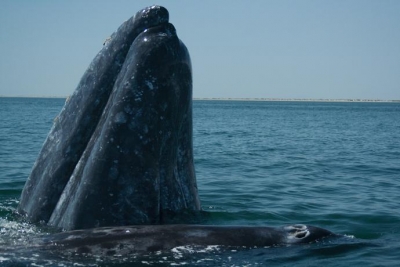
A serial property on the Pacific Coast of the central part of Mexico Baja California Peninsula, the Whale Sanctuary of EL Vizcaino comprises two coastal lagoons – Laguna Ojo de Liebre and Laguna San Ignacio. The site includes the wetlands, marshes, dunes, halophytes, mangroves and desert habitats surrounding the lagoons. Spanning nearly 400,000 hectares, the World Heritage Site is part of the much larger El Vizcaino Biosphere Reserve, Mexico’s largest protected area. The lagoons of El Vizcaino are recognised as the world’s moat important place for the breeding and reproduction of the once endangered Eastern subpopulation of the North Pacific Grey Whale.
The ideal spot
Every year between December and March, many Grey whales come to the sanctuary from the oceans of Alaska to breed. Nearly half the population of gray whales found in the world today is believed to have been born in this sanctuary.
One of the major reasons for the whales making their way here is the high temperature and saline concentration of the lagoon waters, which make it ideal for newborn calves to learn how to float and swim. The shallow waters of the lagoon also help the calves learn how to feed themselves. This is why the sanctuary is known as “The Whales’ Cradle”.
The return of the grey whales
While the current population of the grey whale is estimated to be about 20,000, there was a time when the species was on the verge of extinction. The population had come down to just 200 in the beginning of the 20th Century due to overhunting, including in this very sanctuary. However, due to the local government’s strict protection policy as well as the accreditation of El Vizcaino as a biosphere reserve and later as a World Heritage Site, the grey whales have returned and improved in numbers.
A sanctuary to many others
The lagoons of the sanctuary are home to numerous other marine mammals such as the bottlenose dolphin, California sea lion, blue whale and the harbor seal. Four species of endangered marine turtles can also be found in the lagoon. These are the leatherback, green, hawksbill, and olive ridley turtles. The shallow waters of the lagoon serve as an important habitat and nursery for a large number of fish, crustaceans, and other forms of life. Many breeding as well as migratory bird species such as the brant goose depend on the lagoons and their surrounding habitats.
Picture Credit : Google
